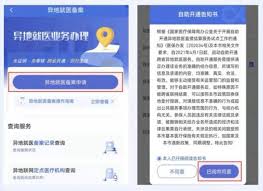官方网站上 1z-042 Exam Topics
时间:2010-10-19 来源:劲松
Architecture
[ ] Outline the Oracle Architecture and its main Components
[ ] Explain the Oracle instance architecture
Installing the Oracle Database Software
[ ] Identify common database administrative tools available to a DBA (1)
[ ] Use optimal flexible architecture
[ ] Install software with Oracle Universal Installer
[ ] Identify and configure commonly used environment variables
[ ] Use Installer Log (2)
Creating an Oracle Database
[ ] Use DBCA to Create a database
[ ] Use DBCA to Delete a database
[ ] Use DBCA to manage templates
Managing the Oracle Instance
[ ] Use Enterprise Manager
[ ] Use SQL*Plus and iSQL*Plus to access the Oracle Database
[ ] Modify database initialization parameters
[ ] Describe the stages of database startup
[ ] Describe the database shutdown options
[ ] View the database alert log
[ ] Use dynamic performance views (3)
Managing Database Storage Structures
[ ] Describe how table row data is stored in blocks (4)
[ ] Define the purpose of tablespaces and data files
[ ] Explain space management in tablespaces
[ ] Create tablespaces
[ ] Manage tablespaces: alter, drop, take offline, put online, add data files, make read-only or read-write, generate DDL
[ ] Obtain tablespace information
[ ] Explain key features and benefits of ASM (5)
Administering User Security
[ ] Create and manage database user accounts
[ ] Create and manage roles
[ ] Grant and revoke privileges
[ ] Create and manage profiles (6)
Managing Schema Objects
[ ] Create and modify tables
[ ] Define constraints and states of constraints (7)
[ ] Dropping and truncating tables (7)
[ ] Create and use B-Tree and Bitmap indexes (8)
[ ] Create Views
[ ] Create sequences
[ ] Use data dictionary
Managing Data and Concurrency
[ ] Manipulate data through the use of SQL
[ ] Identify and administer PL/SQL objects
[ ] Describe triggers and triggering events
[ ] Define levels of locking
[ ] List possible causes of lock conflict
[ ] Monitor and resolve lock conflicts
Managing Undo Data
[ ] Monitor and administer undo
[ ] Configure undo retention
[ ] Describe the relationship between undo and transactions
[ ] Size the undo tablespace
Implementing Oracle Database Security
[ ] Apply the principle of least privilege
[ ] Audit database activity
[ ] Implement Fine-Grained Auditing
Configuring the Oracle Network Environment
[ ] Use Database Control to Create additional listeners
[ ] Use Database Control to Create Oracle Net service aliases
[ ] Control Oracle Net Listeners
[ ] Identify when to use shared servers versus dedicated servers
Proactive Maintenance
[ ] Gather optimizer statistics
[ ] Manage the Automatic Workload Repository
[ ] Use the Automatic Database Diagnostic Monitor (ADDM)
[ ] Set warning and critical alert thresholds
[ ] React to performance issues
Performance Management
[ ] Use enterprise manager to view performance (9)
[ ] Tune SQL by using SQL tuning advisor (10)
[ ] Tune SQL by using SQL access advisor
[ ] Use automatic shared memory management (11)
[ ] Use the memory advisor to size memory buffer (11)
Backup and Recovery Concepts
[ ] Describe the types of failure that may occur in an Oracle Database
[ ] Identify the importance of checkpoints, redo log files, and archived log files
[ ] Tuning instance recovery
[ ] Configure a database for recoverability
[ ] Configure ARCHIVELOG mode
Performing Database Backup
[ ] Create consistent database backups
[ ] Back up your database without shutting it down
[ ] Create incremental backups
[ ] Automate database backups
[ ] Backup a control file to trace
[ ] Monitor flash recovery area
Performing Database Recovery
[ ] Recover from loss of a Control file
[ ] Recover from loss of a Redo log file
[ ] Recover from loss of a system-critical data file
[ ] Recover from loss of a non system-critical data file
Performing Flashback
[ ] Describe flashback database (12)
[ ] Resotore the table contents to a specific point in time (12)
[ ] Recover from a dropped table (12)
[ ] Use Flashback Query to view the contents of the database as of any single point of time (12)
[ ] View transaction history or row with flashback transaction query (12)
Moving Data
[ ] Describe the general architecture of Data Pump (13)
[ ] Use Data Pump export and import to move data between Oracle databases
[ ] Load data with SQL Loader (14)
[ ] Use external tables to move data (14)










